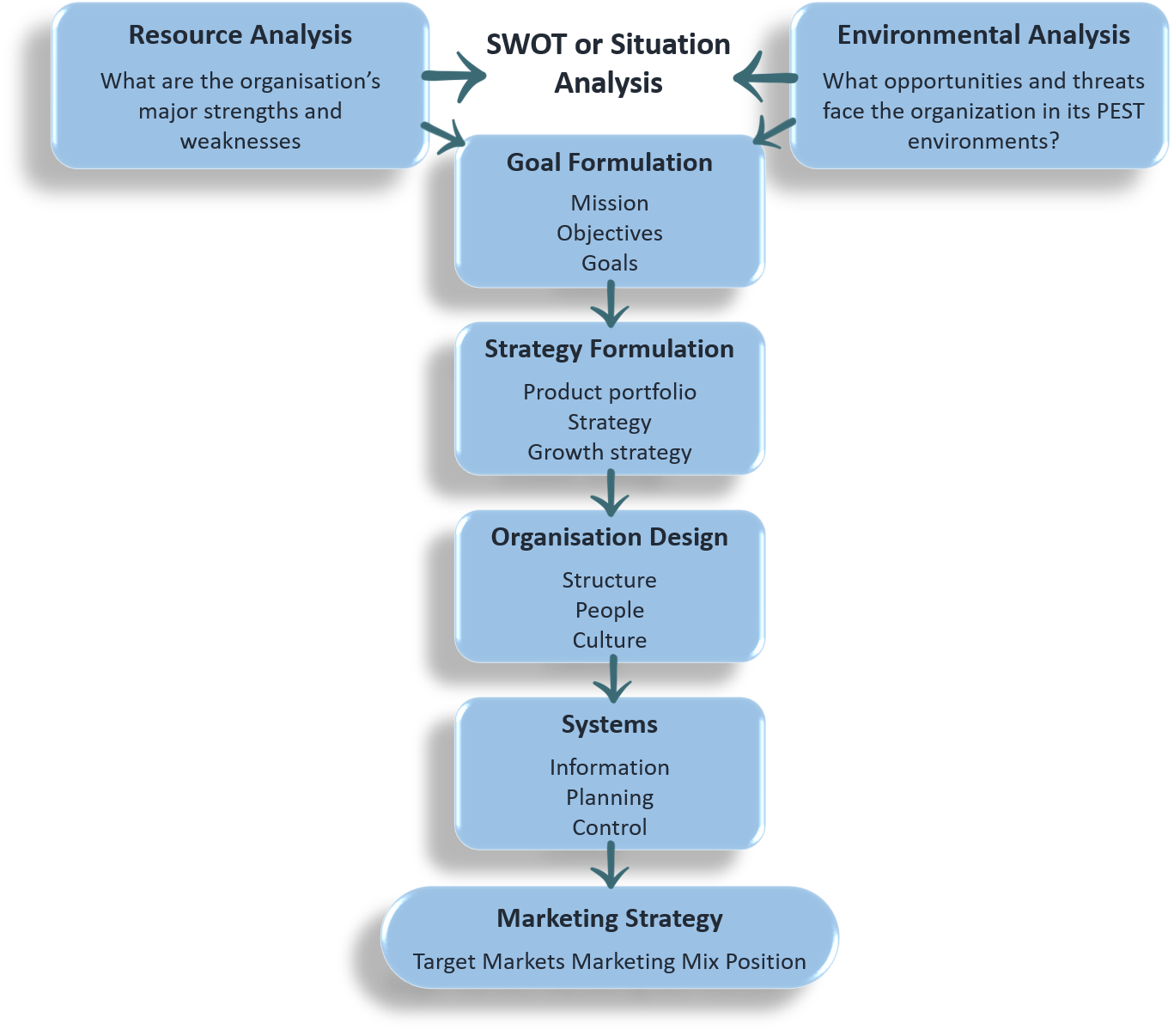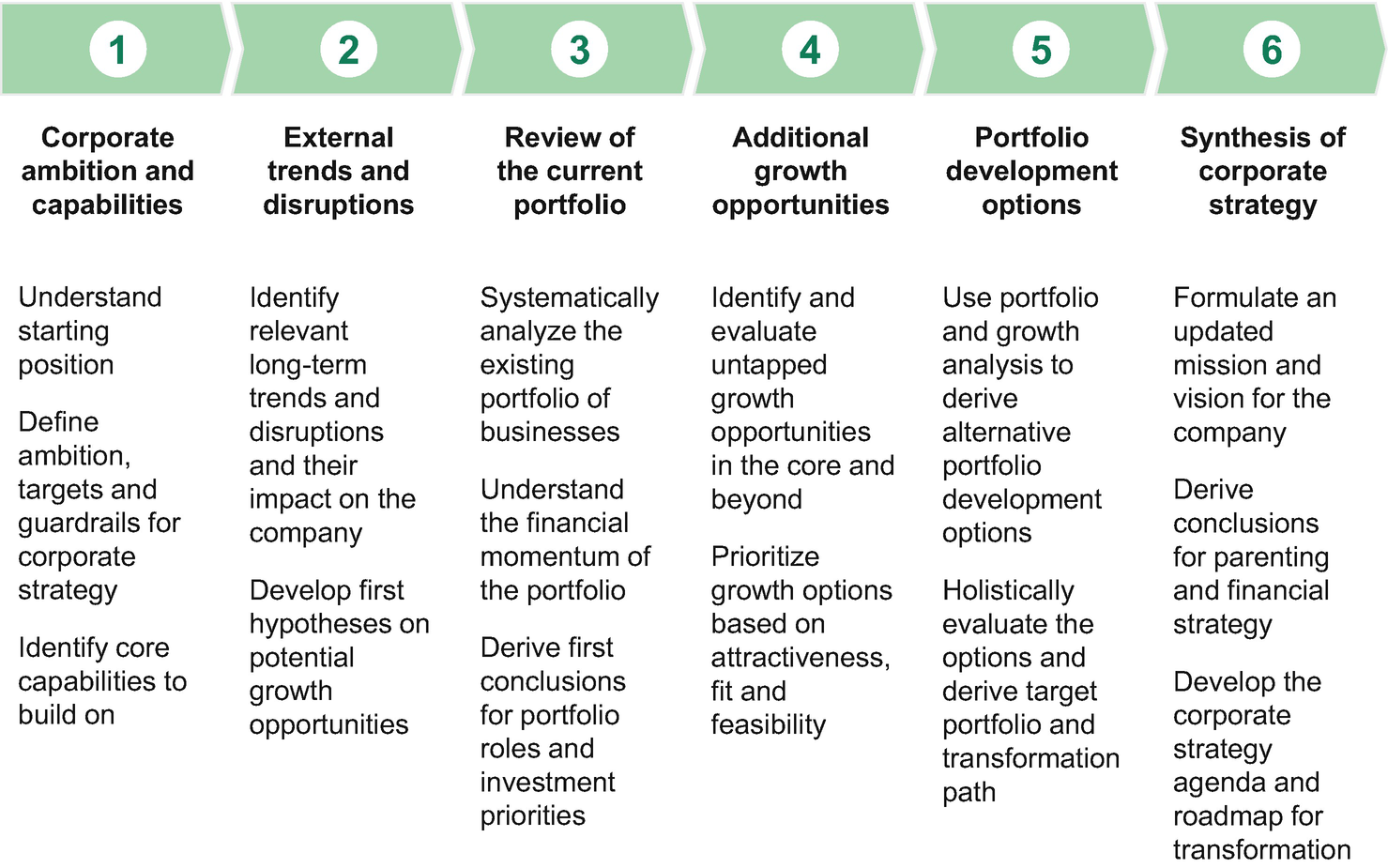Different Business Plans – Marketing and the Corporate Planning Process
All business plans have a heavy marketing input. Attention will be given here to two plans – the corporate (strategic or business) plan and the marketing plan (for the whole company, a division, a product line, or an individual product).
The Corporate Plan
The corporate, business, or strategic plan is an overall plan for a firm. It can be annual, intermediate, or long-range. It deals with companies’ missions, growth strategies, portfolio decisions, investment decisions, and current objectives and goals. It does not have details on the activities of individual business units, but it does support the development of organisational structure as a logical outflow of strategy.

Formulation of Corporate Strategy

The task of this guide is to develop a comprehensive, yet usable model for the formulation of corporate and marketing strategy. There are some requirements for such a model. Firstly, it should relate to decisions that affect the long-term competitive position and even the survival of the organisation. Secondly, it should relate to the routine, day-to-day operations necessary to carry out short-range programmes. Thirdly, it should be logical and easy to follow and should stimulate obvious questions at each stage, in checklist fashion.
The process starts with a situation analysis, also known as a SWOT analysis. The organisation must analysis, also known as a SWOT analysis. The organisation must analyse its resources to identify what is strengths and weaknesses are. At the same time, the organisation must scan the environment in which it operates. This environment consists of political, legal, economic, socio-cultural, and technological variables, which, although largely uncontrollable by the individual firm, will affect it in many ways. The environmental variables will mean opportunities for some firms and threats for others. It is important that the firm try to identify these and assess the impact they will have. The situation analysis (SWOT = strengths, weaknesses, opportunities, threats) will give the firm a clear picture of its current situation. The next step is to determine where the firm ought to go. This involves a process of goal formulation. The firm must formulate a mission statement or definition of its business; it must identify major objectives and it must specify goals that it will strive to achieve.
Having defined where it is and where it wants to go, the organisation must formulate strategies that will enable it to get there. In the model above, strategy formulation is viewed as consisting of two phases. Product portfolio strategy involves asking the question ‘what products or major service lines does the organisation have now, and what will it do with them’? This question moves it to the second phase. Growth strategy requires that the organisation ask what it is going to do about new products and entering new markets.
Choosing a strategy requires that the organisation be designed in such a way that it is able to carry out its strategy. The organisation must have a structure, it must have people and it must have a congruent culture if goal attainment through the chosen strategy is to be realised.
If the strategic process is to be successful, three systems must support it. Firstly, there must be a planning system, for the development of formal, disciplined plans. Secondly, there must be an information system that supports a flow of relevant, timely information for decision-making. Thirdly, there must be an adequate control system, which allows for the monitoring of plans, the measurement of results and the taking of corrective action.
This process of strategic market planning precedes the development of marketing strategy such as that outlined in the early chapters of this text. Stated broadly, marketing strategy consists of decisions in three areas:
Target markets must be selected that will be the focus of the organisation’s marketing activities. This choice requires a process of market segmentation.
The needs of the target markets chosen must be catered for by the development of a marketing mix for each of the target markets. The organisation needs to make decisions about the product or service, price, marketing communication and distribution and how each of these four elements of the marketing mix will contribute toward the attainment of marketing goals.
Finally, whether it is conscious of this, any organisation will be perceived as being something or occupy some position in the market’s mind. Fit is better that the organisation develop for itself a well-considered positioning strategy, in which it wishes how to be perceived is delineated and meaningful points of difference between itself and its competitors are defined.